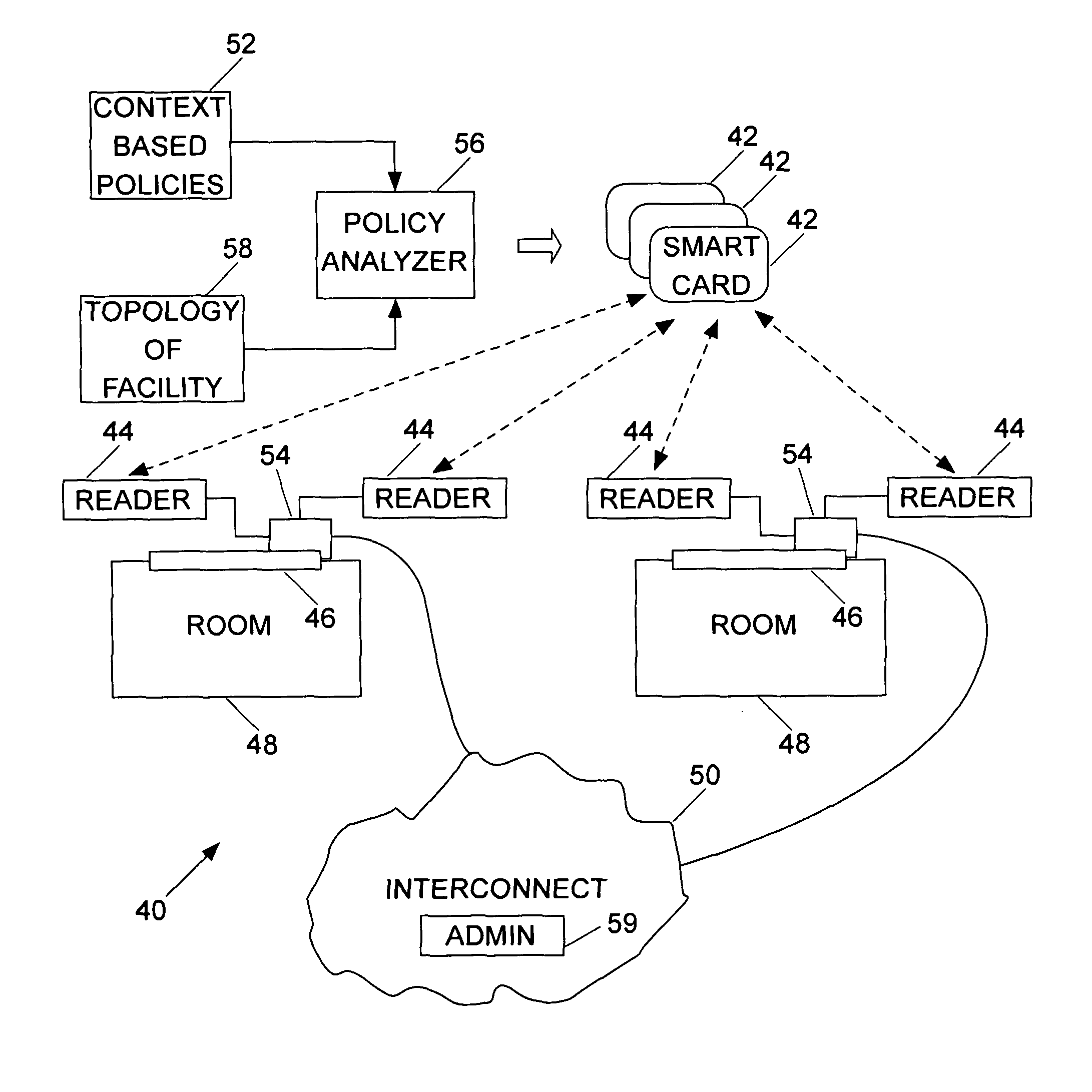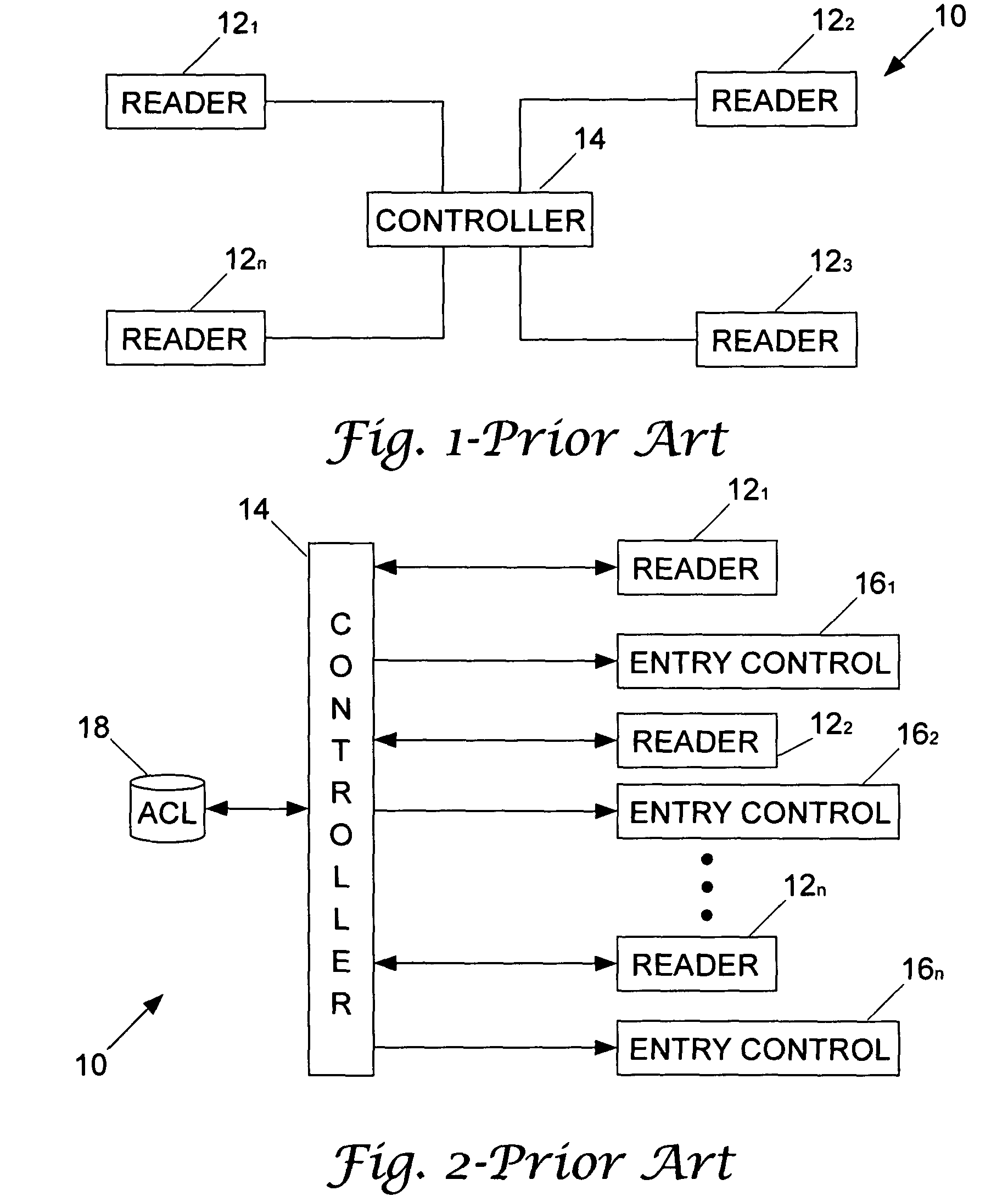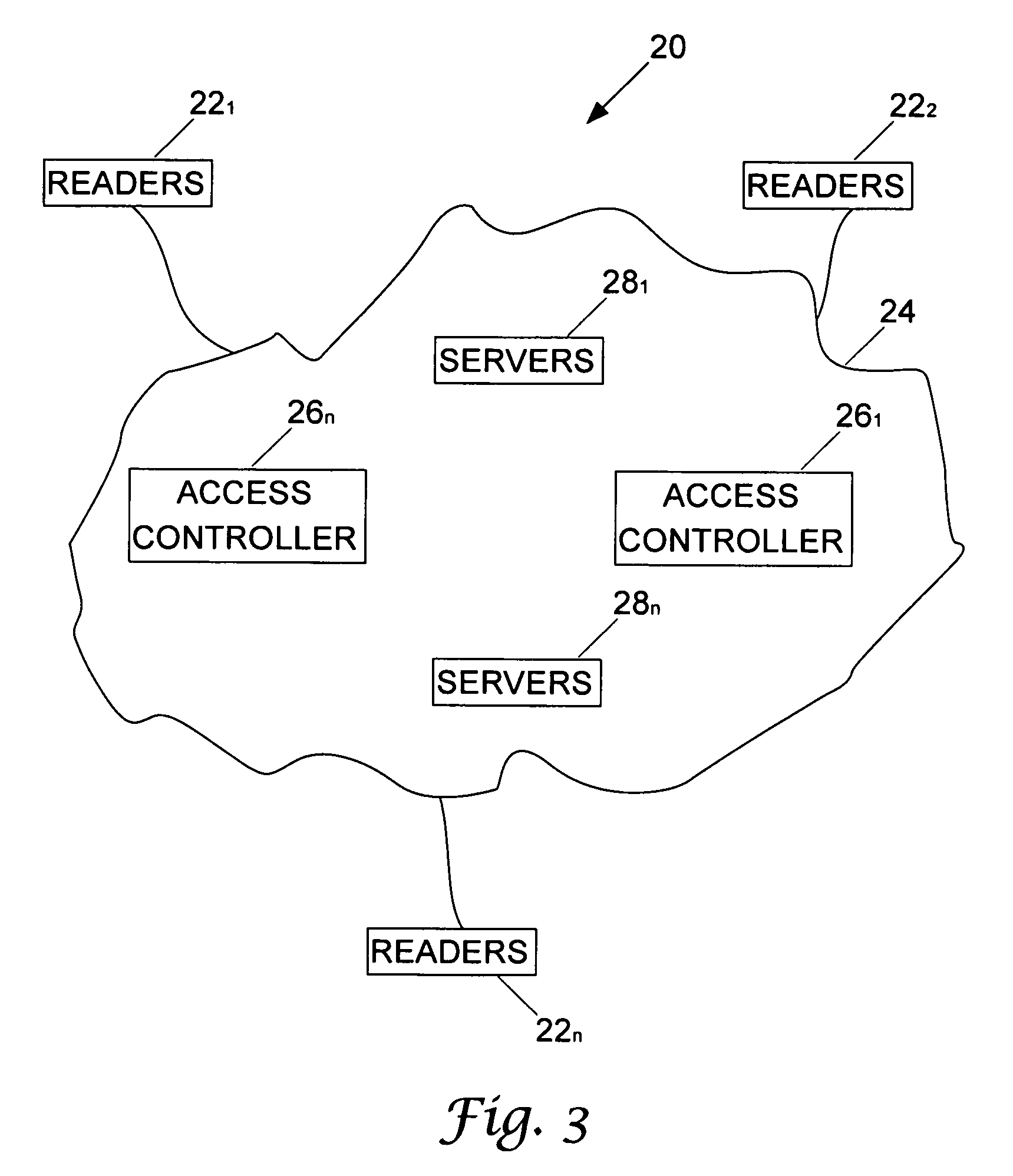Decentralized access control framework
a decentralized access control and framework technology, applied in the direction of program control, testing/monitoring control system, instruments, etc., can solve the problems of inability to identify a particular functional architecture for decentralized user access control in relation to large facilities, increase in the number of users, or complexity, and the centralized solution will not scale up well
- Summary
- Abstract
- Description
- Claims
- Application Information
AI Technical Summary
Benefits of technology
Problems solved by technology
Method used
Image
Examples
Embodiment Construction
[0040]The domain of the control of physical access to a facility involves users (who are free to move) making requests (e.g., swiping a card, pointing a device, etc.) to some physical device (e.g., reader, processor, etc.) for access to some resource. For example, facility access control that guards a user's physical entry / exit to / from a room or other similar restricted area exemplifies this physical access control space. Facility access control specifies and enforces a set of policies / rules that dictate access of users to spaces such as rooms. Authorization deals with the issues of determining whether to grant or deny access as per the policies / rules that are conditional on dynamically changing aspects of the system.
[0041]This issue of authorization is addressed herein, as distinct from issues relating to security (i.e., secure communication of authorization decisions) and authentication (identification of an user). Existing access control systems primarily address static policies ...
PUM
 Login to View More
Login to View More Abstract
Description
Claims
Application Information
 Login to View More
Login to View More - R&D
- Intellectual Property
- Life Sciences
- Materials
- Tech Scout
- Unparalleled Data Quality
- Higher Quality Content
- 60% Fewer Hallucinations
Browse by: Latest US Patents, China's latest patents, Technical Efficacy Thesaurus, Application Domain, Technology Topic, Popular Technical Reports.
© 2025 PatSnap. All rights reserved.Legal|Privacy policy|Modern Slavery Act Transparency Statement|Sitemap|About US| Contact US: help@patsnap.com



